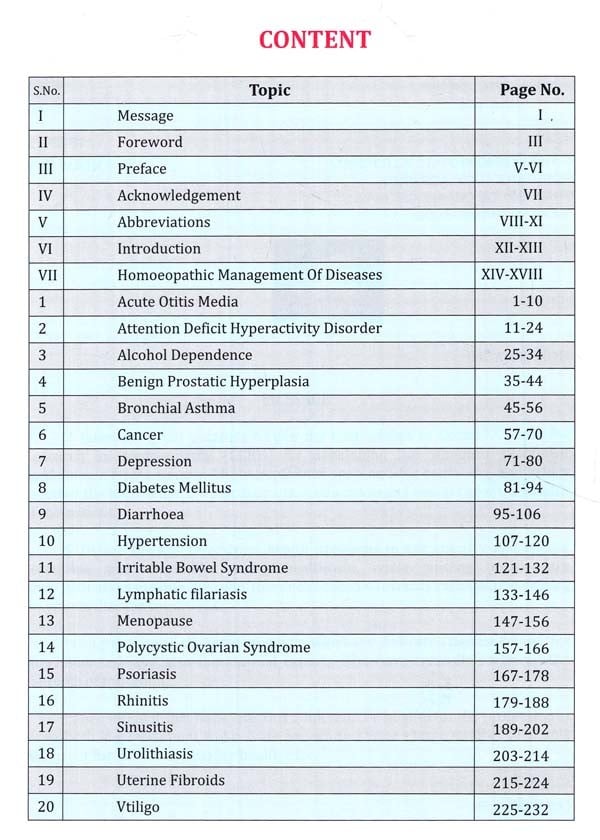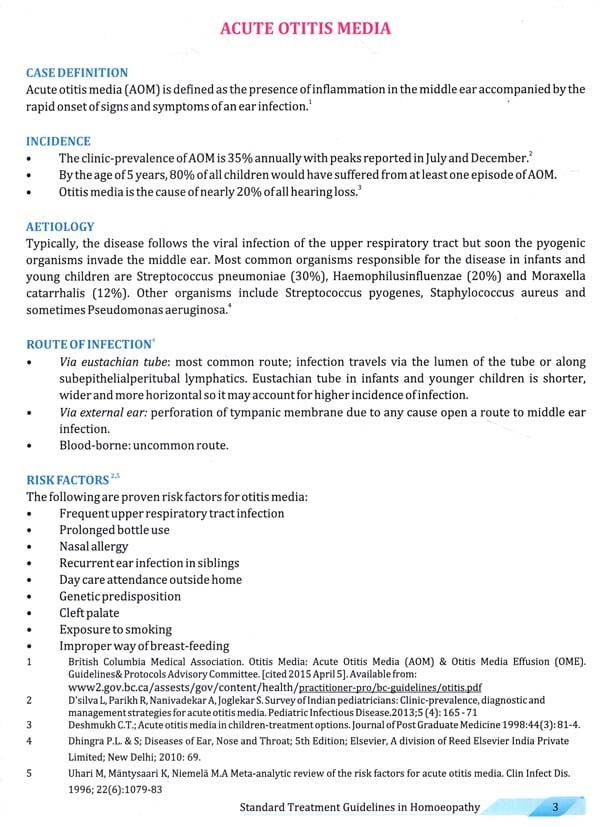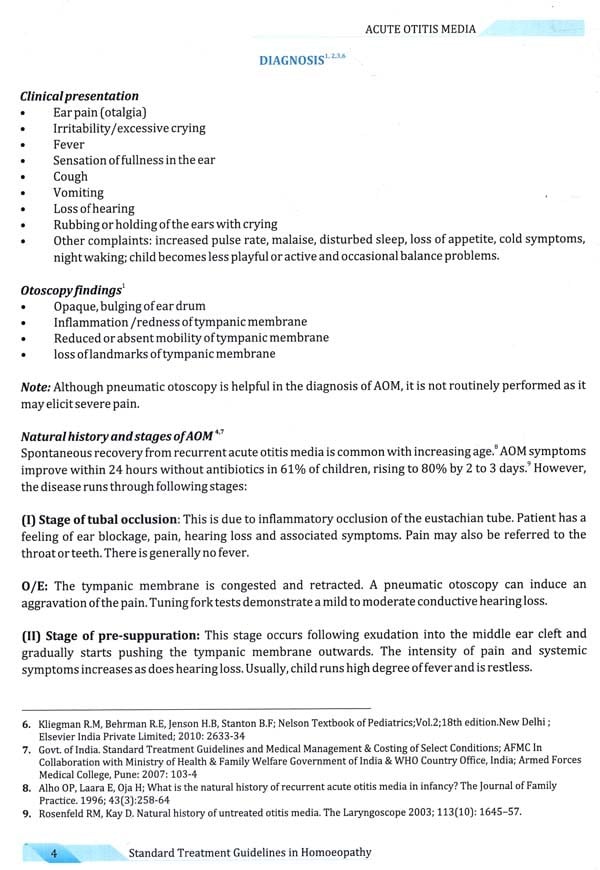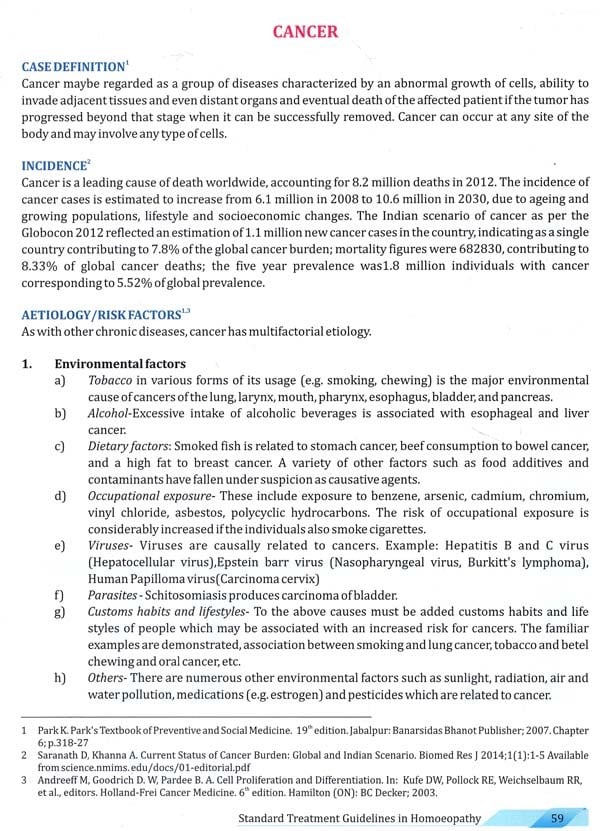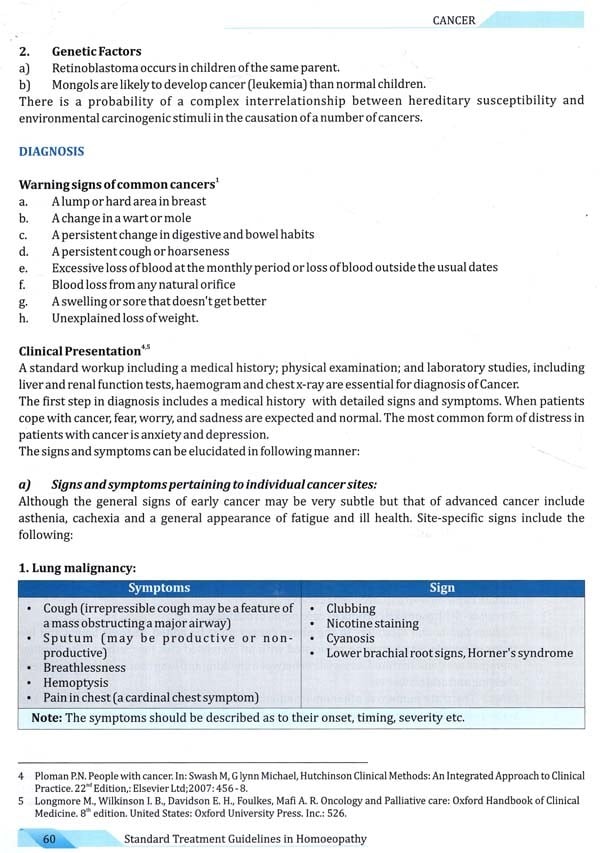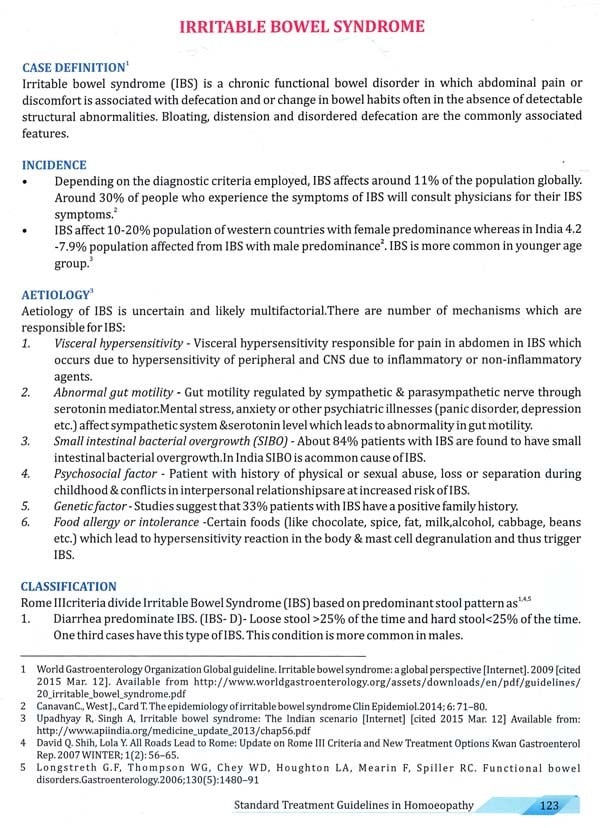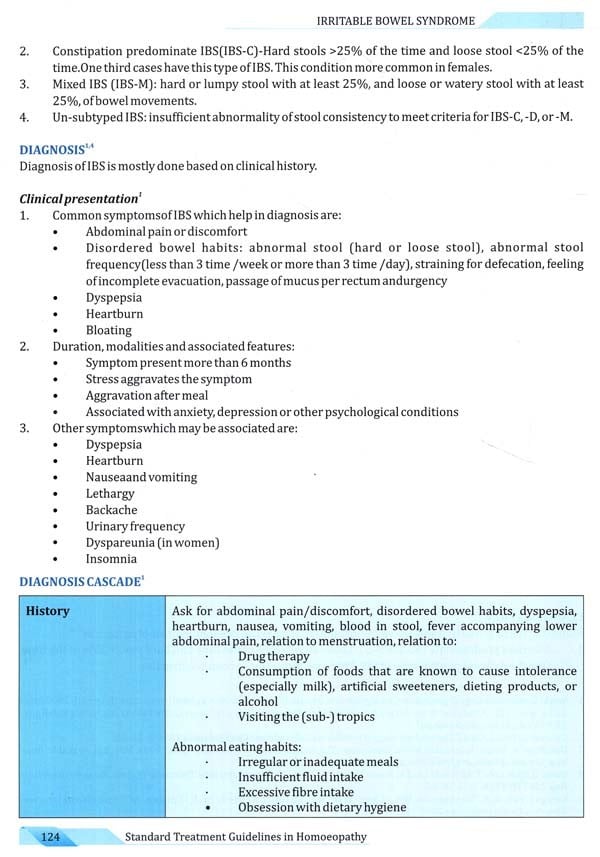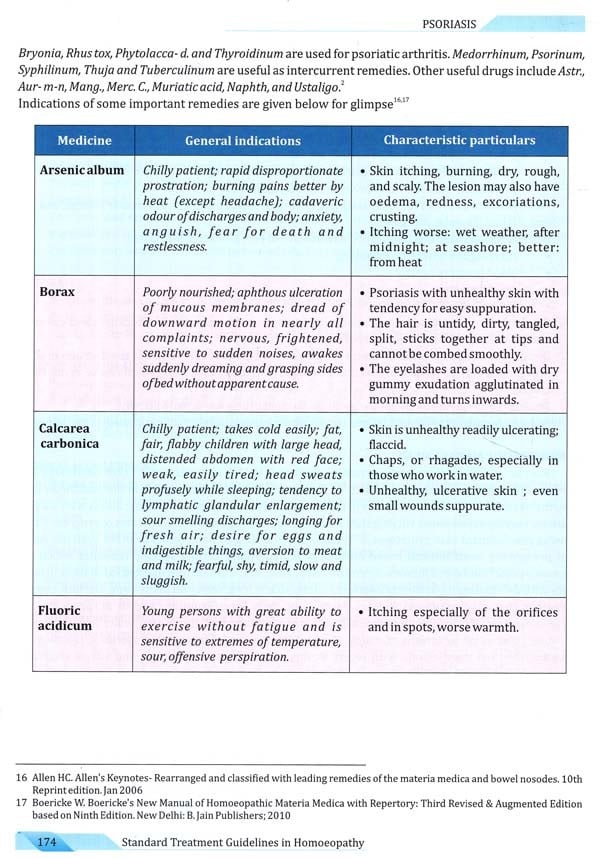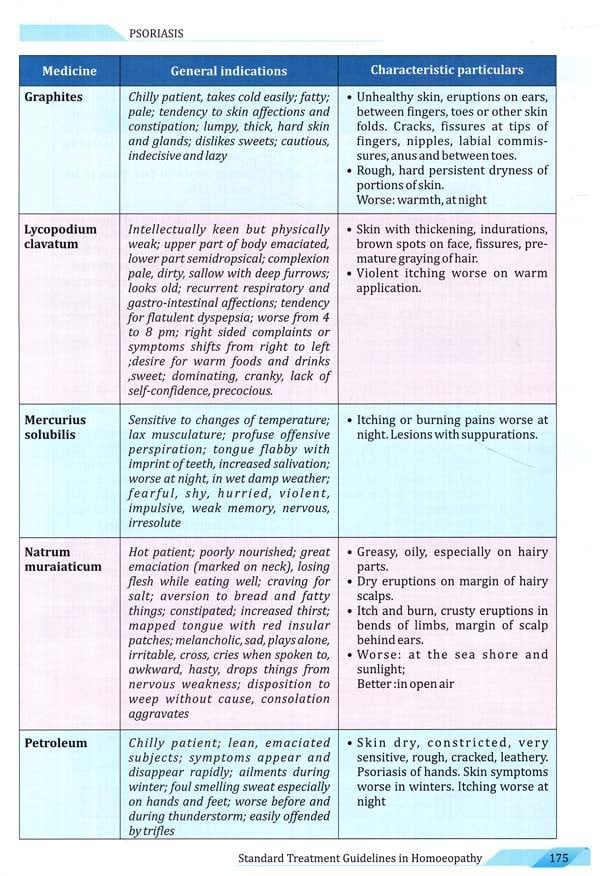
Standard Treatment Guidelines in Homoeopathy
Book Specification
| Item Code: | UAA863 |
| Publisher: | Central Council for Research in Homoeopathy, New Delhi |
| Language: | English |
| Edition: | 2018 |
| ISBN: | 9789381458525 |
| Pages: | 256 |
| Cover: | HARDCOVER |
| Other Details | 11.00 X 8.50 inches |
| Weight | 920 gm |
Book Description
Health systems, particularly in developing countries, are facing with growing health needs on one hand and limited resources on the other. Designing cost-effective, standardised health interventions that ensure accessible and affordable quality care for all is the need of the hour and is thus a primary point of focus for policy makers at various levels. Standard Treatment Guidelines (STGs), being systematically developed statements on appropriate treatments for specific clinical problems are known to be the reliable tool for healthcare providers to deliver standardised and effective clinical care at affordable cost.
STGs not only offer great advantages to health care providers (by giving an expert consensus, quality care standards and basis for monitoring), but also to supply managers (by making demand more predictable), to patients (by providing more consistency and treatment efficacy) and to health policy makers (by providing focus for therapeutic integration of special programs and promoting efficient use of funds).
Central Council for Research in Homoeopathy (CCRH) is an autonomous body of Ministry of AYUSH, Govt. of India which undertakes, coordinates, develops, disseminates and promotes scientific research in Homoeopathy. Council is carrying out clinical research studies, ranging from observational studies to Randomized Controlled Trials (RCTs) to continually validate the effectiveness of homoeopathy in various clinical conditions.
CCRH has prepared these STGs, based on expert consensus, information available in the authoritative texts, review of published scientific evidence of acceptable approaches to diagnosis, management and/or prevention of specific diseases; data from national and international research studies and is a stepping stone towards better delivery of homoeopathic treatment.
I am pleased to support this initiative undertaken by CCRH and am confident that this document shall be of great benefit to all the users. I also hope that the document shall be updated and more diseases conditions will be added from time to time to make these guidelines more inclusive.
It was often said that "Homoeopathy treats the patient and not the disease" but the relevance of the statement was only limited to olden days when disease diagnosis was not much developed. The statement only highlighted the fact that a homoeopathic practitioner could treat/provide relief to a patient based on the available symptomatology barring the nosological labelling which wasn't that well developed.
Knowledge about diagnosis in earlier times was limited and was primarily done for prognosis of the case. With advances in sophisticated techniques, medical diagnosis has come a long way, from empirical diagnosis to clinical and laboratory diagnosis which has widened its scope in management of the patient.
This advancement in medical field has been of paramount importance for a homoeopathic practitioner as well who is faced with the challenge of treating various diseases. A homoeopathic physician has a dual task of establishing a disease diagnosis as well as a patient diagnosis as per the individualistic holistic approach of the system of medicine. Both are vital in identification of the indicated remedy for the management/treatment of the patient. Casual observation, as well as more systematic study of prescribing practices, frequently reveals a pattern of tremendous diversity among prescribers in the treatment of even the most common conditions. A Standard Treatment Guideline (STG) which provides standardized guidance of diagnosis and therapeutic management of a diseased condition can be a solution to this therapeutic anarchy. Also, a simplification of treatment can facilitate the objective AI appraisal of value of homoeopathic system of medicine.
Over the years, RCTs/Observational studies, experiences of homeopathic practitioners have tried to identify remedies suitable for various disease conditions per se. The Council with the aim of conducting research on scientific lines in Homoeopathy has completed 119 clinical studies and has collected data of most useful medicines in various diseases.
Council has made an attempt to develop a standardised guideline for management of diseases, based on expert consensus, review of current published scientific evidence of accegtable approaches to diagnosis, management and/or prevention of specific diseases; data from research studies. Such a systematically developed statement can assist practitioners in rational decision making about appropriate health care for specific clinical circumstances, help maintain quality standards and also represent one approach in promoting therapeutic effective and economically efficient prescribing.
In the beginning of this initiative, eighteen diseases have been identified. Each condition gives clear presentation of definition, symptoms, epidemiology, diagnosis, differential diagnosis and its general management. Apart from this the STGs also include information about various outcome measurable questionnaires which can be used by the homoeopathic practitioner for disease assessment, treatment evaluation (follow up) and research. An algorithm of the treatment process given at the end of each disease condition helps in having bird's eye view of disease and also indicate appropriate time of referral.
The book puts forward a group of medicines found most commonly indicated in each disease as identified from published research papers, Materia Medica and inputs of experienced homoeopathic practitioners. These STGs are prepared for wider dissemination and implementation by the practitioners at large. The Council welcomes inputs and experiences of practitioners for betterment of these guidelines and looks forward to continuous updating.
While it is hoped that the book may prove to be a concise and ready reference, it makes no pretension to being anything more than an introduction to the important conditions; in no sense is it put forward as a complete treatise. Readers are advised to check the most current information. It is the responsibility of the practitioner, relying on his/her own experience and knowledge of the patient, to make diagnosis, to determine dosages and the best treatment for each individual patient, and to take all appropriate safety precautions.
Quality and standard healthcare delivery is very important for the people of any country. To have quality control and assurance, certain set standards are required to reach the target harmonized healthcare delivery. Standard Treatment Guidelines (STGs), a systematically developed statement designed to assist practitioners and patients in making decisions about appropriate healthcare for specific clinical circumstances are one such document.
Standard Treatment Guidelines (STGs) have been in vogue in India only since recent times and are gaining popularity among practitioners, owing to uniform guidelines; they have the advantage in bringing together patients, healthcare providers, drug manufacturers and marketing agencies, and above all, d policymakers and the legislative system of the country. The drawback in STGs lies in the difficulties in the implementation on a large scale.
Homoeopathy is a holistic system of medicine wherein patients are treated with an individualistic approach. Here the treatment given to each patient is tailored according to his/her need. Quality control and assurance can be achieved by following uniform guidelines that are in consonance with the available homoeopathic literature, modern medicine, research and day-to-day practices. In pursuance to the Ministry of AYUSH, Government of India, Central Council for Research in Homoeopathy has taken a lead and developed standard treatment guidelines for both acute and chronic diseases.
The set of conditions included in STGs is not exhaustive; rather it is based on the conditions recommended for management and treatment in day-to-day practice. It is emphasised that the choices described het have the weight of scientific evidence to support them, together with the collective opinion of a wide group of recognised experts. Recommended treatments are primarily limited to the medicines that wet published in research papers, and/or conform to the opinion of experts as well as experience homoeopathic practice. It also covers medicines enlisted in essential drug list (2012).
This document on standard treatment guidelines (STGs) is designed for use by a homoeopath at all d levels delivering the health services. The guidelines can also be used by general practitioners in the private practice. The STGs are designed to be used as a guide to treatment choices and as a reference boa to help in the overall management of patients, such as when to refer.
The research recommendations used have been rated on the following WHO ratings: 1) Evidence rating A - requires at least one randomised control trial as part of a body of scientific literature of overall good quality and consistency addressing the specific recommendation.
2) Evidence rating B - requires the availability of well-conducted clinical studies, but no randomise clinical trials on the topic of recommendation.
3) Evidence rating C - requires evidence obtained from expert committee reports or opinions and/or clinical experience of respected authorities. This indicates an absence of directly applicable clinical studies of good quality.
The contents of these treatment guidelines will undergo a process of continuous review, for which, comments or suggestions for improvement are welcome. Those comments or suggestions for addition of diseases should include evidence of prevalence as well as a draft treatment guideline using the format set out in this book.
HOW TO USE THIS BOOK?
To use these guidelines effectively, it is important that you become familiar with the contents; take time to read the book and understand the contents and layout.
The contents of this book have been arranged in an alphabetical order. Within each section, research outcomes both nationally and internationally have been identified. For each of these disease states, the structuring of the information and guidelines has been standardised to include a brief description of the condition or disease, more common signs and symptoms, general management followed homoeopathic treatment choices and flow chart of entire condition.
The book also incorporates the assessment scales used across the globe by researchers and to some extent by physicians in their practice can also be used for making homoeopathy evidence based system of medicine.
Homoeopathic therapeutics have been suggested, which includes the characteristic physical generals, mental generals and particular symptoms related to the disease. The pattern has been adopted to emphasize on holistic approach of homoeopathic treatment, which forms the fundamental basis of prescription.
REFERRAL
These guidelines also make provision for referral of patients to other health facilities. Patients should be referred when the prescriber is not able to manage the patient either due to lack of personal experience or the availability of appropriate facilities. Patients should be referred, in accordance with agreed arrangements, where the necessary diagnosis and support facilities exist. The patient should be given a letter or note indicating the problem and what has been done so far, including laboratory tests and treatment. When indicated for referral, minimal treatment must be given before the patient reaches a physician/hospital of referral.
**Content and Sample Pages**
